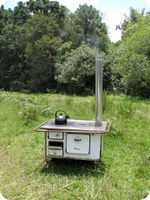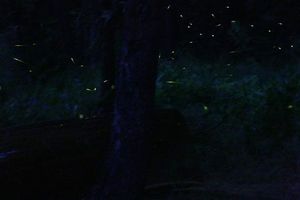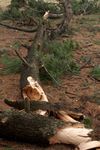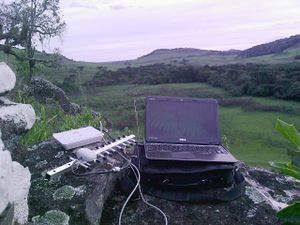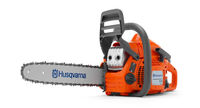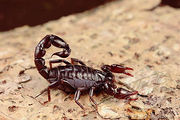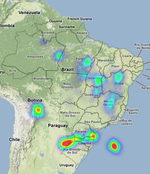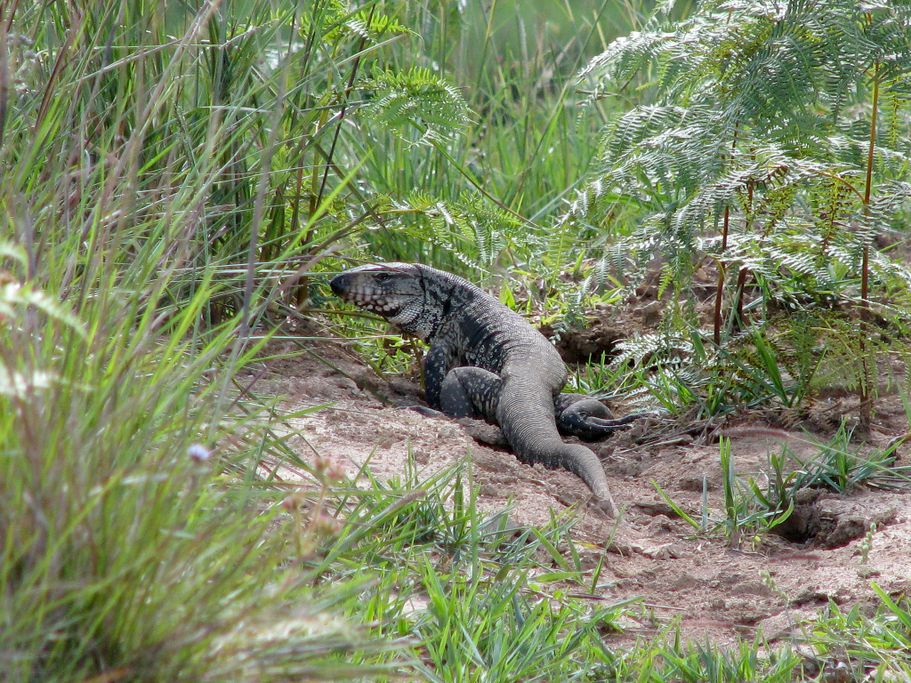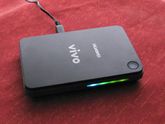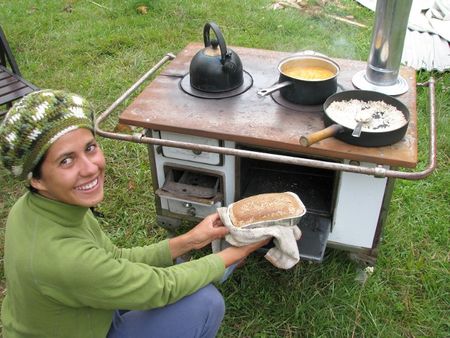Moving on to our land
| 1. Moving from Curitiba to Canela | Our power project | |
| 2. Moving on to our land | Our rural net connection | |
| Year on the land: 1 | 2 | 3 | 4 | 5 | 6 | Our first house | |
| Our second house | ||
| Lada Niva |
After moving from Curitiba to Canela, we're slowly made the move on to our land, this article is a diary of first fifteen weeks which is the time it took to get some wood and get a basic house constructed to a point where we could live in it. After this initial four months we're still unable to live on the land full time because we need to bring some other projects to more of a state of completion first such as our rural net connection, our power project and our garden.
Contents
Week one
I'll start doing weekly updates from now on since we're only able to make it into Canela once or twice a week since its such a difficult trip. I've started at one again since it's our first week on the land. We moved the tent and most of our things to the proper final location because the wind was too strong in the temporary location and it snapped one of our tent poles. It's much more sheltered in the "island" (a clearing within the natural bush that we'll eventually build our dwellings and plant our fruit and vegetables).
The first thing to set up was the toilet - we're using a big bucket in the bush with the toilet seat from our last flat on it. To prevent odour and to assist with the composting process we put saw-dust on top of the content, the bucket is emptied every few days onto a compost pile in the bush - this compost is used for fruit trees not for the vegetable garden. Large bags of saw dust can be obtained from local saw mills, but we didn't have to look because there's about ten large sacks of it close to our previous camp site :-)
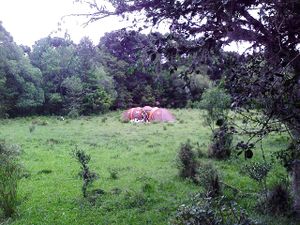
|
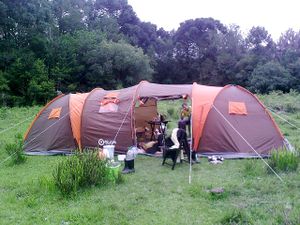
|
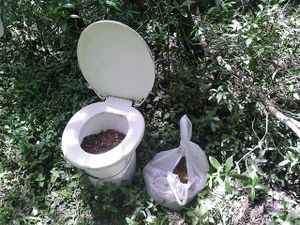
|
The land is really awesome, there's so many kinds of natural resource available such as sand, clay, really fertile soil, bamboo and many fallen trees, many with incredibly hard wood. There's humming birds, cranes, hawks, quales and there's a family of armadillos living a few meters away from our tent :-) we even have our own tiny beach where we can wash our clothes and ourselves!
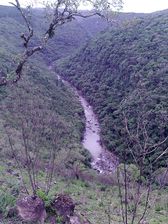
|
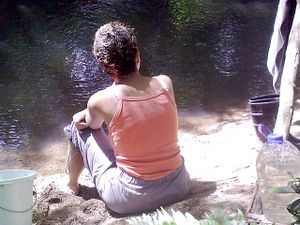
|
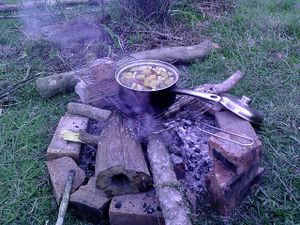
|
At night there's amazing bugs called Vagalumes which are like fire flies but their light is brighter and white and fades on and off periodically while they fly about slowly. They give the land a really magical feeling as many of them come out as it starts getting dark and they surround our little island around the tent and vegetable garden!
Week two
The week started with our trip back from Canela to the land. When we got close we started to see a lot of fallen trees, and then a few houses with their roofs torn off, some completely destroyed! Some trees were torn out of the ground and snapped in half - some so thick you couldn't reach around them! When we were in the cafe the night before there had been very heavy rain and wind, but out in the land it seems it had been much more violent. We were very anxious on the way back expecting to see our tent completely ripped up and all our belongings scattered for hundreds of meters around the valley, but to our surprise everything was just how we'd left it apart from some minor damage to one tent - and everything inside was dry! it's very lucky that we'd decided to move from our temporary location though because there was a lot of damage there. It seems that our little island is well protected by the surrounding hills and bushland - whew!
The next day we started our first project on the land which was to build a fence so that we can start planting fruit and vegetables without the cattle eating it. There's a lot of fallen trees in our bush area so we got the axe and started cutting some lengths suitable for fence posts and support braces, and then stretched some wire around it that we had bought in Canela along with some tightening ratchets.
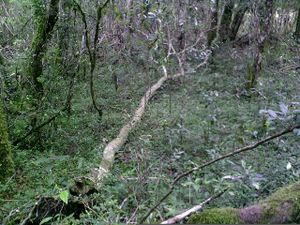
|
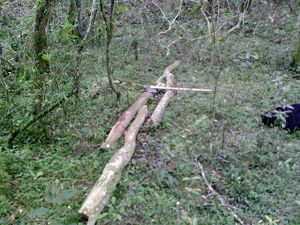
|
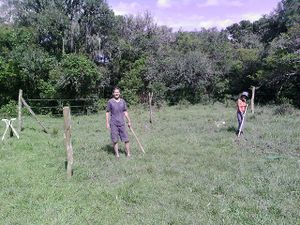
|
The next project was to try and get a temporary "office" for doing some internet work each day, but unfortunately the our rural Internet connection is not as good as expected and we'll need to keep coming in to Canela each week. I have to get more work done than I'm able to in the current situation, so we're looking in to renting a cheap place that we can stay so we can spend half the time here and half the time there until we can figure something better out for the land's connection.
The road that we travel to get to Canela is like a huge spiral going about four times more distance than displacement, but when we talked to some neighbours they told us there's a shorter road but that it's very difficult. We figured it couldn't be that much worse than some parts of the long one, so today (Saturday, November 3rd) we decided to try the shorter road. Well, we made it, but the three of us unanimously voted never to do that again! we were lucky and if the road had been a little wetter we would certainly not have made it, there were many huge holes and chasms in the road that are a meter or more deep and lots of areas that are little more than enormous piles of rocks. Some of the neighbours in houses we passed towards the end looked shocked to see a vehicle coming from that direction!
Week three
We started this week in Canela to buy some more tools and try and sort out some Internet options for the land. Candido's mother has kindly let us stay in a house of hers that is being done up which is a great help. The bathroom's in a bit of a bad state, and the kitchen is non-existent - and we sometimes have some workmen turn up early in the morning dripping paint on our heads while we're in our sleeping bags, but apart from all that it's excellent being able to stay in Canela as long as we need to each week without having to worry about finding a cheap room that we can all stay in each time :-)
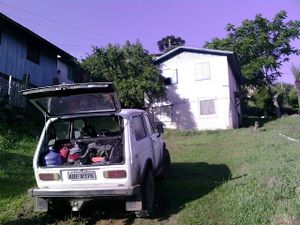
|
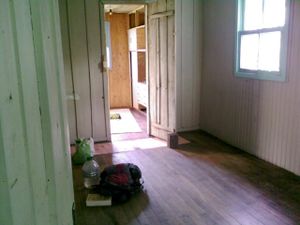
|
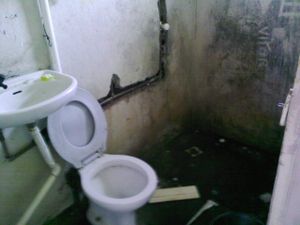
|
Our planting area is now all fenced off and protected from roaming cows so Beth's now busy planting vegetables in it. She's marked off the planted areas with construction tape so that Joe and I don't accidentally step on the wrong places! The first things she planted were the poor plants we'd brought with us from our vege patch in Curitiba which were in bad shape after the trip down, we brought mint, peppermint, spring onion, peas, oregano, basil and spinach. We also got many already developed seedlings of letuice, cabbage, kale, beetroot, parsley, capsicum and aubergine from a store in Canela for only R$1 for 12 seedlings!. Here's a picture of her planting some sunflower and corn seeds we'd saved and sprouted.
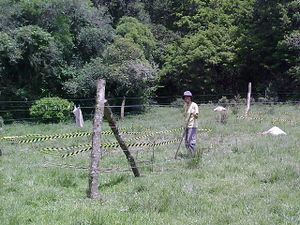
|
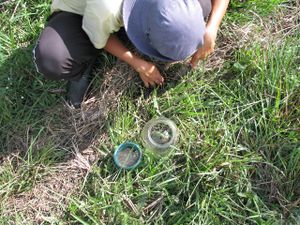
|
Our next project is to get our first dwelling built which will be used for sleeping, storing tools and also as a workshop until we can eventually build some more smaller dwellings for private quarters and then make the first one into a shared area for working and socialising. We're building using as much of the readily available materials as we can such as fallen wood on the land and spare materials like pallets. The first step is to put some foundations down.
We're using a method similar to a pole house except that the poles are short and will only hold up the floor since we don't have logs long enough to also work for supporting walls and roof (we're avoiding chopping any trees down and trying to use only what's already available). We scorch the ends of the logs that will be buried so that they won't rot (a trick we learned from The Barefoot Architect). It doesn't matter if the lengths of the poles are a bit out because we'll be bolting and nailing 6x4 planks onto the sides (we'll probably have to buy these), not the tops, that way we can ensure we have a perfectly horizontal floor regardless of the unevenness of our poles. During the process of boring holes for our poles, Joe accidentally chopped the tail off a scorpian! this is a bit of a worry because we thought the only dangerous creature in our area would be the Jararaca snake and that there were no scorpians at this elevation or this far south.
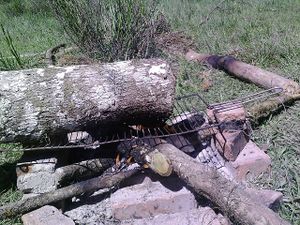
|
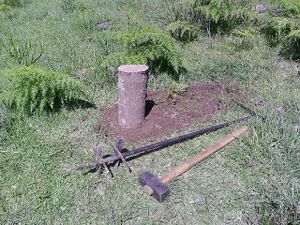
|
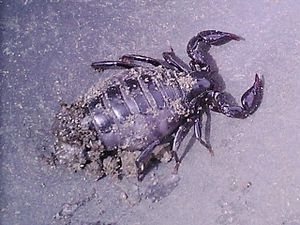
|
This week we were finally able to relax a bit and explore some of our land. The natural bush area is amazing with many secluded areas, interesting bugs and colourful birds, we're still finding it hard to believe that this amazing place is really ours! I haven't yet been able to get any good pictures of the birds or other exotic creatures such as snakes and armadillos (we know there's a snake around because we saw a freshly shed snake skin yesterday morning!) but we'll no doubt get some good pictures as the weeks go by.
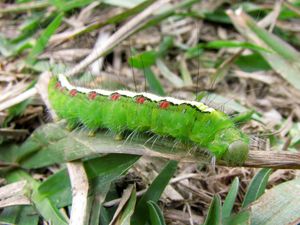
|
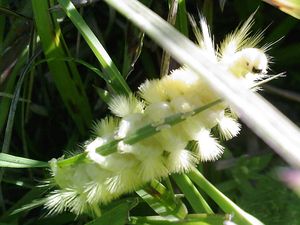
|
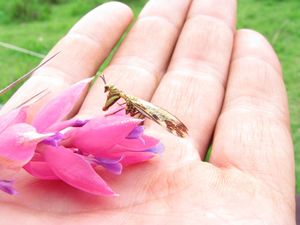
|
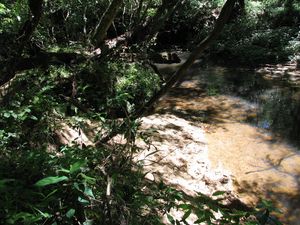
|
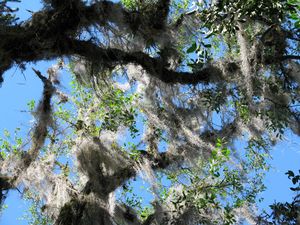
|
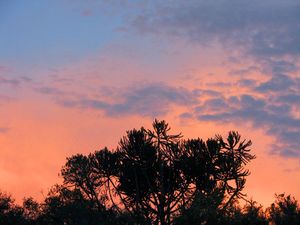
|
Amongst all the hard work we had some time to enjoy the sun and little beach and do some meditation. We set up our small tent in the bush out of the sun for our temporary meditation temple :-) it has a nice view of the river and has crystals on the floor which we've found in the ground and in the river - the whole area seems to be filled with these crystals!
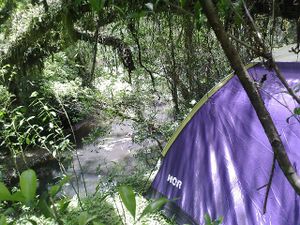
|
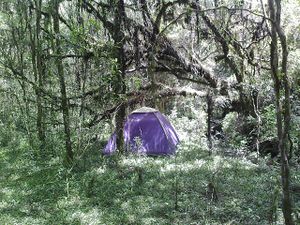
|
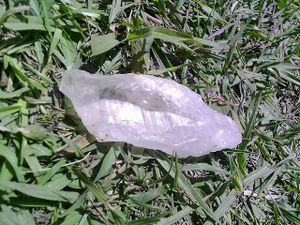
|
Week three ended on 11 Nov 2012 which is the anniversary of our move to Brazil :-) thanks to our friends who sent nice messages and reminded us of this important day, especially as it's very hard to keep track of time on the land and we almost forgot! Here's a couple of pictures from that last day in New Zealand. The third picture is from a few months ago when I finally made it through the huge bureaucratic labyrinth and obtained my temporary Brazilian ID, which is the main part of the process for getting residency in Brazil. The rest of the process involves the federal police coming to check out our living situation to ensure that we're a legitimate couple, but since we've moved to another state, we need to go and talk to them again in Caxias and explain our new situation which we'll be doing soon.
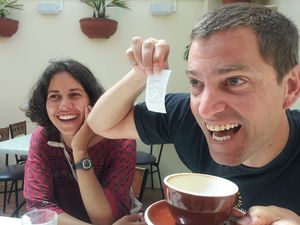
|
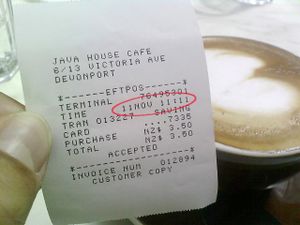
|
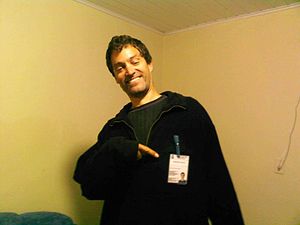
|
Week four
We started the week this with a change of plan - it's been too difficult getting work done having to come in to Canela every week and try to get things done in internet cafes and bakeries, so on our first day in Canela this week we rented a room in a pensão so that we have a permanent base here that we can work from. A pensão is kind of like a flat but it already has all the facilities and you just pay on a month-by-month basis - but you don't get to choose your flat-mates. The place Beth found is in a really nice neighbourhood with lots of trees and cobblestone roads and it has a secure area behind the house where we can put the car. She came to a deal with the owner whereby we can have a room for all three of us for the same price as two since we're going to be away at the land for a good portion of each week.
Getting a net connection has been a bit of a problem because the excellent 3G/Wifi/Lan router I bought is now broken after it fell out of a window onto the concrete! so we're temporarily using Joe's Android phone in Wifi hotspot mode using my Vivo Sim card.
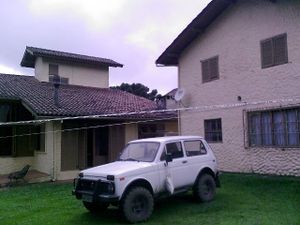
|
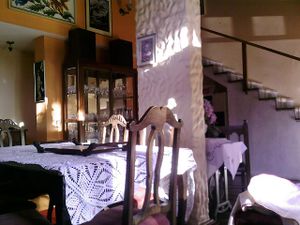
|
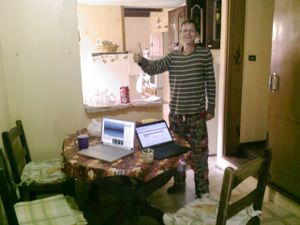
|
On Tuesday, Beth and I took the bus to Caxias today to notify the federal police of our change of location so they can come and visit us at the pensão to assess the legitimacy of our relationship to finalise my residency. We found a nice cafe there with Internet, a great wine selection and excellent food - the mushroom quiches were perfect! we ended the day with a cold bottle of Opa Pilsen which is a local beer made in Joinville where we bought our Lada Niva from :-)
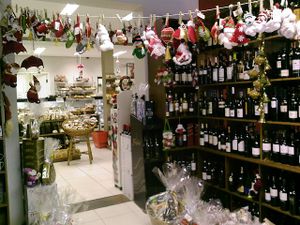
|
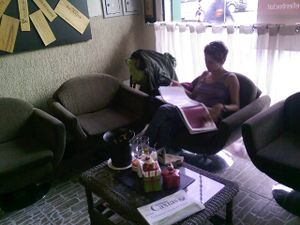
|
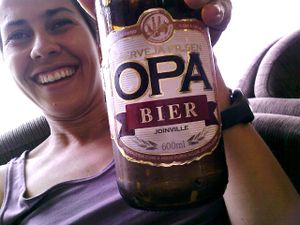
|
When we got back to the pensão we went to the talk to the women next door to ask if it was her wifi connection we could see and if it would be ok if we could access it. Not only was she and her husband happy for us to use it, but it turns out that he's in to IT as well and is looking for English speaking people to teach some PHP, javaScript and networking which would be excellent for Joe while he's still getting his online work rolling! I'm connected to next door's wifi now as I write this, the signal's quite weak, but it's much better than using 3G. Next week I'll bring my 200 milliwatt wifi router which they said they'd be happy for us to plug in to their LAN which should give us a much better connection, so that's our Canela net connection sorted! now we just need to get a solution worked out for the land connection.
Beth and I went back to the land for a few days by ourselves while Joe stayed in the pensão. We had some trouble with some cows led by a particularly stubborn "alpha female" who insisted that our tent area was the best place to feed and she even came to visit in the middle of the night a few times sniffing our things and drinking from our buckets! we decided it would be a good idea to finalise the demarcation of our territory and get it fenced off sooner rather than later. Apart from that it was an uneventful relaxing few days exploring the area and finding new exotic creatures. I got a few good photos of some very strange looking caterpillars that Beth spotted and some more butterflies, and I saw some awesome humming birds, hawks and the armadillos but couldn't get any photos of these unfortunately.
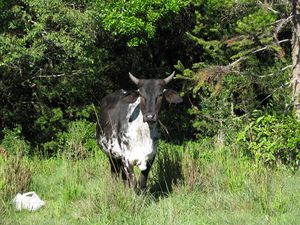
|
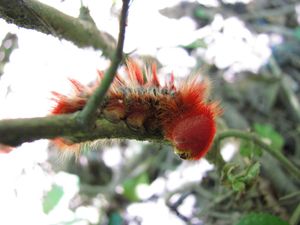
|
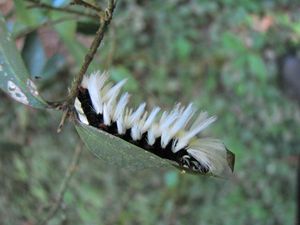
|
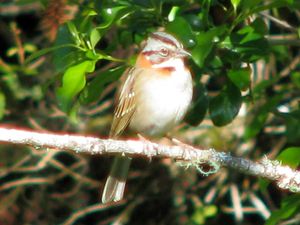
|
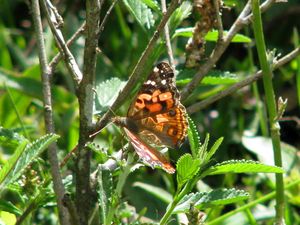
|
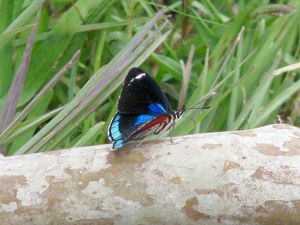
|
I found a spot on the nearest hill where I can pick up a weak 2G connection which means I can go up there each day to check emails and do other text-oriented work. It's too slow for Skype (even text) but fine for email and adjusting wiki pages - and I even shelled in to a server and fixed some issues that I got an email about. This is good news because it means that we should be able to get a reasonably useful connection using a small tower with a 2G router, antenna and amplifier which shouldn't be too costly or difficult to set up. Here's a photo of my new office and a strange looking bug I found there :-)
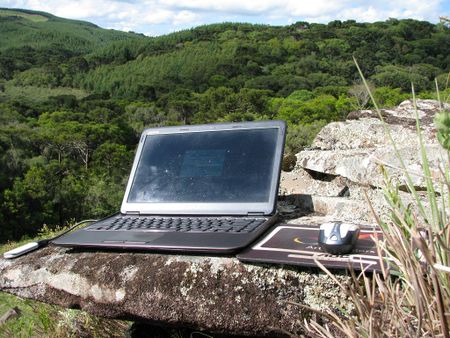
|
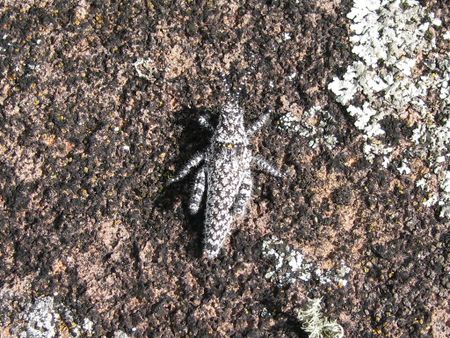
|
Week five
This week started with work on Monday morning which is now our usual cycle. Apart from work we've bought a 40cm Husqvarna chainsaw and found a good place to buy wood for the house. We've also checked out prices for various things such as glass and roofing materials. Even though our idea for the land is about independence, it sometimes feels like a bit of a contradiction - we need to visit the gas station a lot and have to buy petrol for the generator, ethanol and clutch fluid for the car and two-stroke for the chainsaw! but our dependence on these things should reduce down after this initial setup phase eventually to practically nothing as we get our food, water and power solutions established.
We had some bad news this week - unfortunately a problem's occurred in my residency process :-( The Federal Police come to visit at some point after getting the temporary ID so they can assess the relationship to ensure it's legitimate. The problem is that they've been going on strike a lot over pay issues or something which meant that they took over two months to come and visit instead of the two weeks they said they'd take, but when they finally came we weren't there because we'd moved. We'd advised them that we were going to be moving, but it looks like that had got lost in the pipeline due to the strikes as well! so now the head office in Brasilia has been notified that we've failed the assessment.
We talked to the Federal Police in Caxias and they advised us that we can get our status reassessed by waiting until my current failed assessment shows up in the official journal, Pesquisa Jornais do Dia, and then go back to Caxias with evidence that we've moved and go through the relationship assessment process again!
We didn't go to the land this week because on Friday afternoon when we were about to leave a huge thunderstorm suddenly came up and the weather didn't clear up again until Sunday. We didn't really fancy staying in our tent in that kind of weather and needed to be back here in Canela again for the working week, so there's very little to report on this week unfortunately apart from that we finally found a place that sells good water filters so we no longer need to carry huge twenty litre water bottles to the land each week, we can filter water straight from our river :-) Here's some pics of the tent though which is a little more organised now than it was a couple of weeks ago.
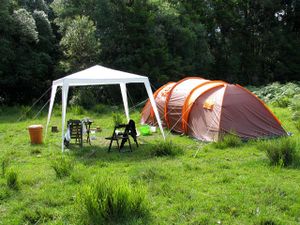
|
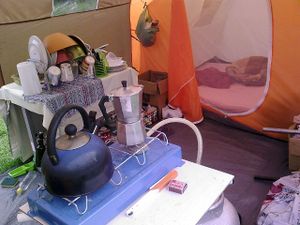
|
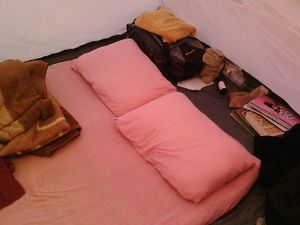
|
Week six
We went to the land early Thursday afternoon even though the weather wasn't the best, and spent Friday and the weekend building our bridge so we could get the trailer across to our land. This is important because we're not able to start ordering wood for the house until we have the trailer there to store it in and to transport it from the river to the land.
Basically the idea was to spend $0 on it by using scrap wood and fallen branches we found around the place, and to use four strong logs which would be positioned under the wheels of the car and trailer (the car wheels are 1.8m apart, and the trailer's are 2.1m apart). Here's some pics we took during construction.
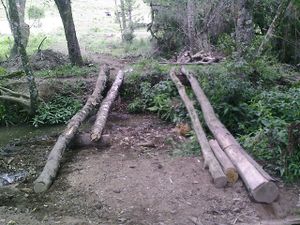
|
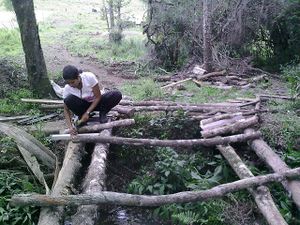
|
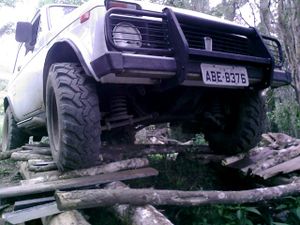
|
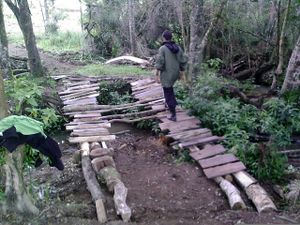
|
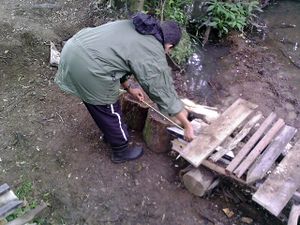
|
We then tested taking the car across both ways before attempting the trailer. The bridge worked fine with no problems, but needs someone to get out of the car and guide the driver as it's impossible to see if the wheels are lined up properly from in the car.
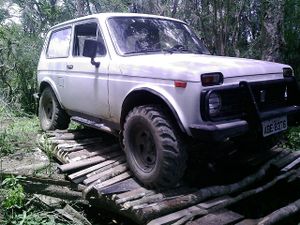
|
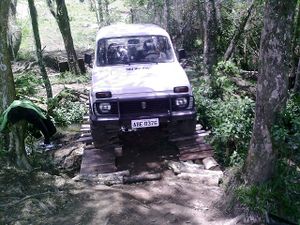
|
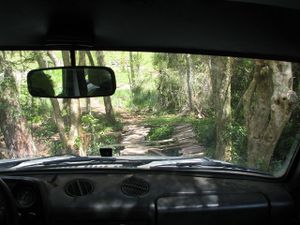
|
So finally we took the trailer across! we definitely won't be taking the trailer across it again! It'll have to wait for Bridge 2.0. We emptied everything out of the trailer first to minimise damage in the event of disaster. We couldn't quite get the trailer lined up initially so we added a few extra logs and some bricks - some of the bits of wood started coming off, but by maintaining forward motion it was ok - toward the end it got a bit dodgy, but Beth made a quick run for it at the end and made it across!
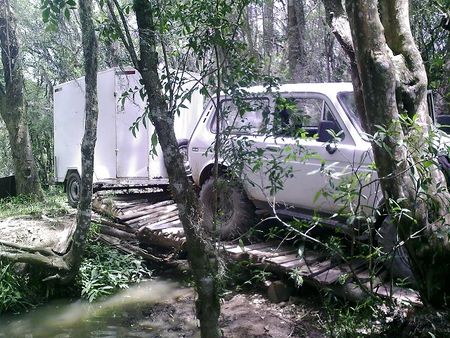
|
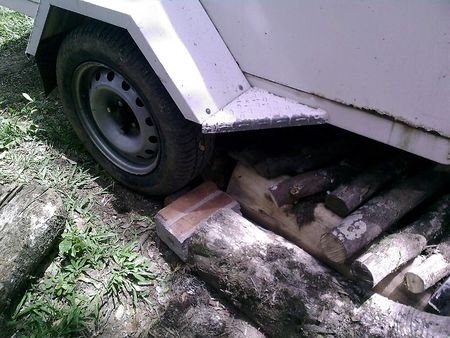
|
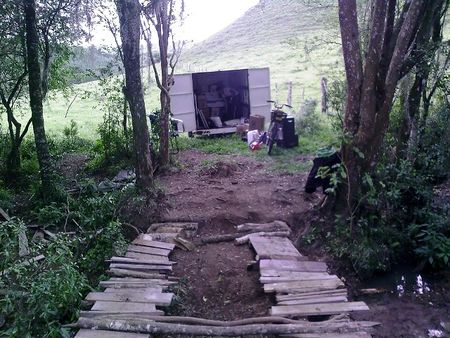
|
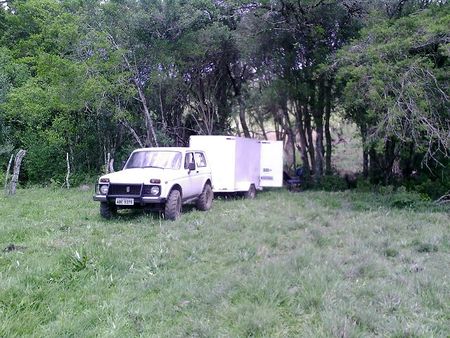
|
We then set off for Canela at about 7pm Sunday evening leaving our trailer next to our local hill. As we passed the small dwelling wrecked by the storm we noticed it had a new resident :-)
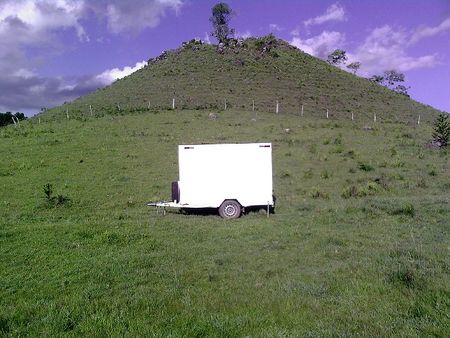
|
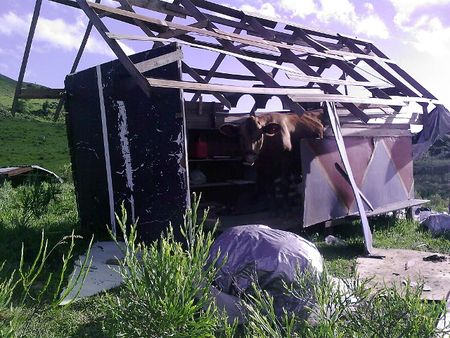
|
We still had about 5km of dirt road to go when we heard a huge thud followed by strong grinding sounds! It sounded as if the gear box had suddenly blown up or something! We took a look under the car and soon found the problem - the transfer case had broken off from the bottom of the chassis! the left hand side was rusted and the bolts had ripped out.
This could have been a really bad night because even though we could see what the problem was, we didn't have anything in the car we could fix it with! luckily within half an hour three gaushos came by in a delivery truck, and even though they didn't have any tools either, they said they could bring something back as they were dropping off a delivery and then coming past again about 10 minutes later. I decided the best bet would be to ask them to come back with some pliers and fencing wire so I could then do some in-the-field gambiarra to temporarily get the transfer case back in to position so we could get the rest of the way back to Canela and get it fixed up properly by a mechanic on Monday :-)
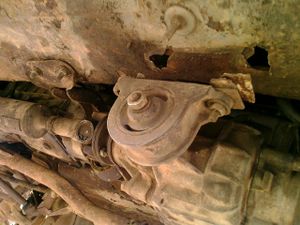
|
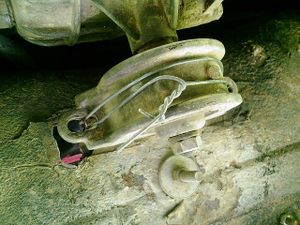
|
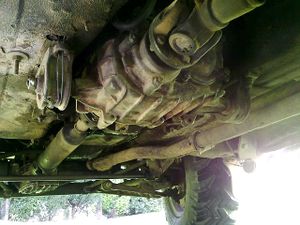
|
This is often a problem when driving off road and many people reinforce their transfer-case mountings using a variety of methods.
Week seven
The first thing to do this week was to get our gambiarra fixed up by a real mechanic! Here's a simple diagram of what would probably be the cheapest way to get it fixed which wouldn't require any welding or any extra bolts - we could do this ourselves, but without proper tools and a workshop it'd just be frustrating :-( Here's some diagrams I made of how we thought it should be fixed and a photo of the work the mechanic did.
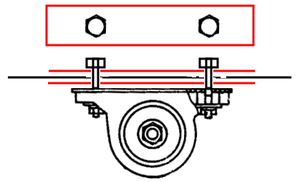
|
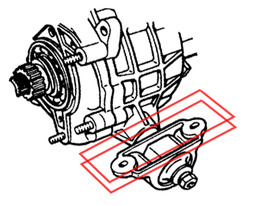
|
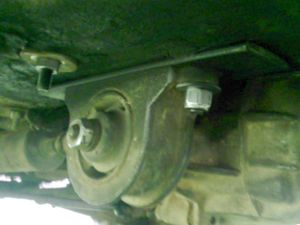
|
We decided to get a bigger hammer with a "waffle face" for hammering in large nails because when we were building the bridge I bent a lot of big nails trying to hammer them in with a normal sized hammer. The waffle face causes the hammer's head to bite into the nail head preventing it from slipping. I also bought some big nails so we can nail logs together - really big nails!
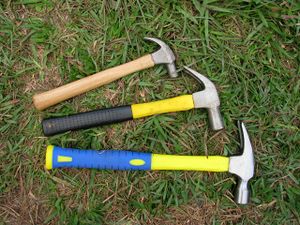
|
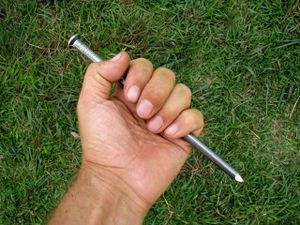
|
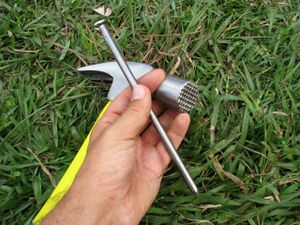
|
The rest of the week was just work as usual until Friday late morning when we set off back to the land. This weekend's project was to clear a path through our bush area so we can get our car and trailer into our "island" where our tent is. There's a reasonably clear route through the trees which only required a few small trees to be chopped down, but two large fallen trees needed to be cleared which was the main work. The first one was quite soft and rotten, so I did this first to get some practice with the chainsaw. The second one was more difficult as it was a large thick tree trunk across the path at about head height made of very hard wood. Apart from getting the chain jammed at one point and having to
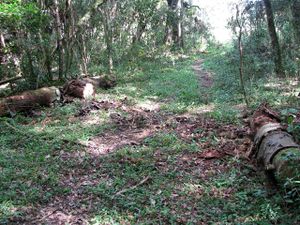
|
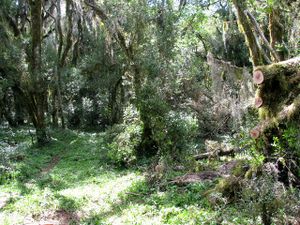
|
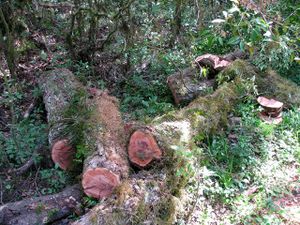
|
Next we bought the trailer through our newly cleared path - this was a bit difficult and needed a bit of on-the-fly chopping and we had to unhook the trailer, reposition the car and re-hook it a couple of times, so we'll need to make some parts a bit wider before getting the trailer through again. It's no problem for the car by itself though, but the trailer's quite long and wide so is much more of a problem.
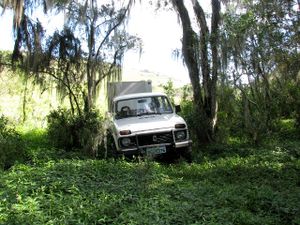
|
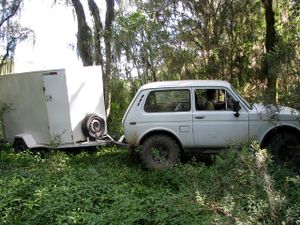
|
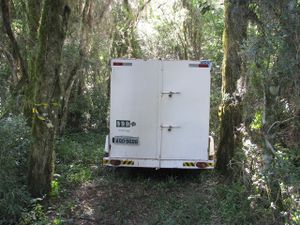
|
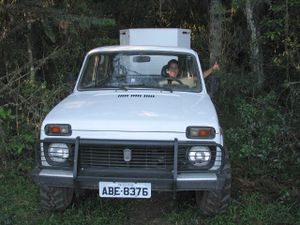
|
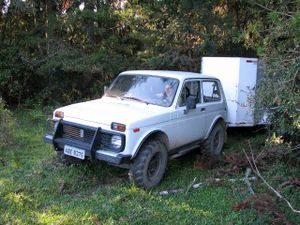
|
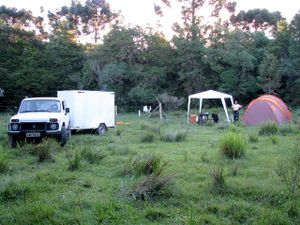
|
It was very tiring work doing so much axing and chainsawing on Friday and Saturday, so on Sunday we had a bit of a rest, but even that turned into a drama! as we were drinking coffee after breakfast I saw a scorpion scuttle past - in the tent! we couldn't find it after that, so though that we'd be best to clean the tent up a bit since there were lots of plastic bags around, and a pile of fire wood in one corner which in hindsight was really asking for trouble. Finally Beth found it hiding under the toothbrush bag! I put a glass over it and slid some cardboard under it so I could take it and throw it in the bush on the swamp side where we don't go. As we cleaned up the tent we found two more scorpions! we didn't get any photos unfortunately because we were too stressed out to think about it, but here's a picture I found of our kind which are about two inches long.
After reading up a bit more on scorpions, we feel a lot less stressed about them. First, unlike how the movies portray them, they're actually quite passive creatures (well our kind are anyway), they don't move very quickly and only sting when they're hurt - similar to wasps. I found this to be the case when I trapped it in the glass (I even accidentally dropped one of them again and had to re-trap it), it didn't go psycho and start attacking everything in sight, it just wandered about fairly calmly since I had taken care not to hurt it. Also we found out that the likely reason they were in our tent was because over the weeks we've accumulated some cockroaches from not keeping the tent area tidy enough, and scorpions favourite food is cockroaches! so the bottom line is; scorpions are ok :-)
Shortly after the scorpion incident we were back to our coffees when we heard some branches shaking in the top of a tall Araucaria tree close by (we have many of these very interesting trees on our land which have edible nuts very similar to chestnuts). We soon saw that there were a group of monkeys playing up there! they were moving about pretty quick so only a couple of the photos showed them clearly. They're Bugio-ruivo monkeys which are very popular in the native bush of Argentina and southern Brazil.
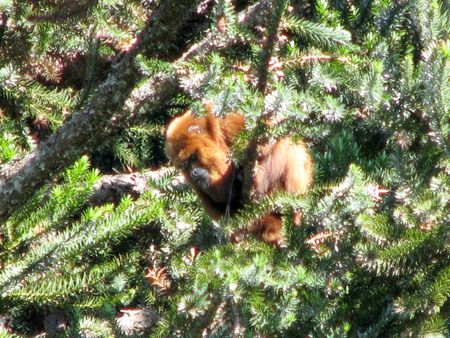
|
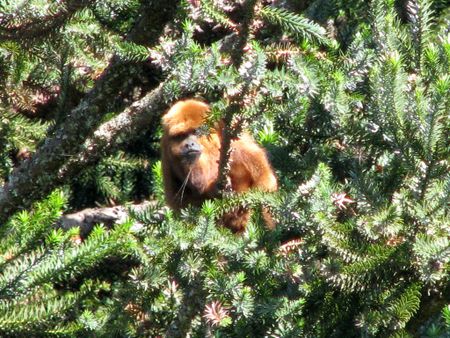
|
There's a huge amount of ferns in the native bush of southern Brazil as can be seen from the first picture below, but what I miss is Ponga trees, or in fact any tree ferns - there's not very many of them around in the natural bush at all for some reason. But yesterday I cam across a single one next to our river, so I'm thinking about getting some cuttings from it to see if I can spread them round a bit :-)
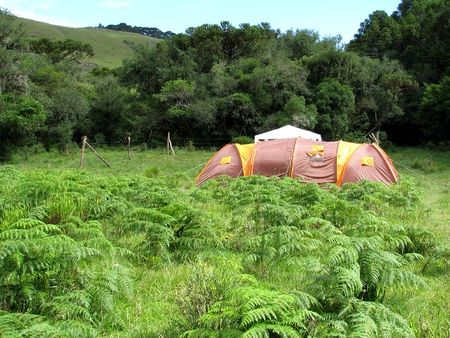
|
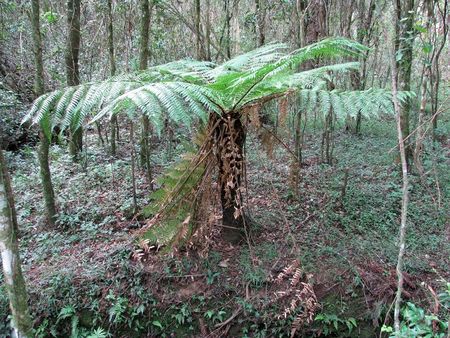
|
Week eight
This week started with an extremely hot sunny day followed by the most enormous lightning storm I've ever heard of during the night, I couldn't understand how there could be so much electricity built up in the sky. Beth said she'd never seen such lightning before either, there were constant flashes multiple times every second without it letting up for even half a second for more than half an hour! then another couple of hours of flashes every few seconds - they weren't small flashes either, many of them rumbled so much that the doors and windows were shaking like a small earthquake. I couldn't see where exactly it was striking, but from the delay of about 6-7 seconds I could tell that it must have been a few kilometres away - where ever it was must have got some bad damage because there must have been tens of thousands of lightning strikes there! Perhaps it's not so surprising though since Brazil ranks 4th in the world for number of fatalities due to lightning, having an average of 156,000 lightning strikes per day with most of them concentrated around Rio Grande do Sul! Luckily our land has two tall hills next to it which would attract any nearby lightning strikes away from us :-)
We're back off to the land today (Thursday) and a truck will be following us with a whole bunch of wood we ordered for our house! We're starting with a very tiny version that's only 5.4m by 2.7m so we can get something we can live in as quick as possible and to start simple for practice since we haven't built anything as complicated as a house before ;-) I've also bought a box of 300 metres of Cat-5 network cable to start our rural net connection which will consist of a cable going from out house to the "rock office" on our local hill about 160 metres away. We're back again! the guy hadn't booked enough time (we estimated about three hours of time was needed) as we had to reschedule to Friday - also we found that our wheels are too loose and need some fixing up at the alignment place.
The plan for Friday was to meet the guy with the truck at the second-hand shop we'd ordered our wood-oven from, put that in the truck, swing by another place to pick up the roofing and concrete pipes for Bridge 2.0, drop by the wood place to collect the wood we'd ordered and then head off to the land and unload it all there - eeeeeasy.
Unfortunately things didn't work out like that! first the guy with the truck didn't show up, when we called him he said he was just finishing up another job, so we kept waited for another hour (we'd already been waiting an hour) then called again, this time he said he'd be twenty minutes, so we went and got our net cable. When we got back to the second-hand shop he still wasn't there and this time when we called he just hung up! so we decided that it wouldn't be right to give this guy any business even if he showed up, so the people at the shop gave us the number of another guy they said was good. This guy was also just finishing off another job, but he showed up in about half an hour like he said so that was a good sign - but it was now only half an hour until the roofing and wood places closed which we figured was a little too much of a rush so we planned to all meet again at eight in the morning on Saturday.
Saturday was again full of disorganisation and drama! first the second-hand shop wasn't open at eight like they said and after waiting for half an hour we decided to go to the roofing place first. After getting the roofing and pipes the second hand shop was open, so the truck guy went to collect the oven and then we all met at the wood place - but someone had sold part of our order! the guys had to use some different wood for our flooring and make it all straight while we waited which was another hour! then we all had to load the truck by hand because the truck didn't open at the side so they couldn't use the fork-lift, which was another hour! Finally it was all loaded and we were on our way - the truck was well over its four ton limit - in fact we actually had to remove some of the extra wood we'd ordered because it was too heavy.
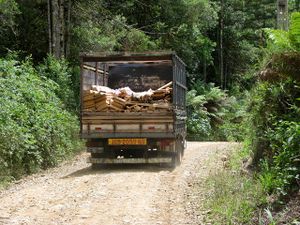
|
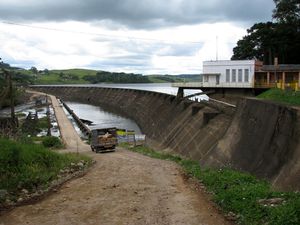
|
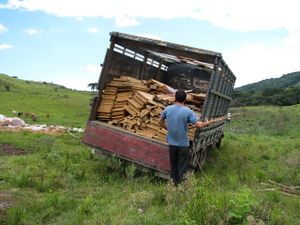
|
We stopped at the place just before the river where we first had our tent - there's no way the truck would be going across our Bridge 1.0! so we threw al the wood out in a pile ready to stack after the truck guy left so save time. The next problem; when we rolled the pipes out, one of them broke revealing that they didn't have any reinforcing in them which makes them useless for a bridge! this means we'll have to delay Bridge 2.0 and carry the wood a little at a time in the car without the trailer :-( After it was all unloaded we'd taken up about seven hours of the guys time! so we paid him double and off he went back to Canela - but as he drove off the path slightly to get around our car his truck sunk into the mud and got stuck! we had to spend another 45 minutes filling the hole around the wheel with wood and rocks and getting covered in mud pushing the truck out!
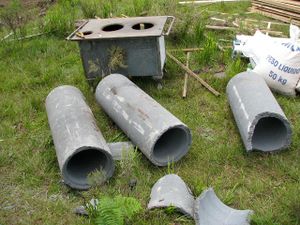
|
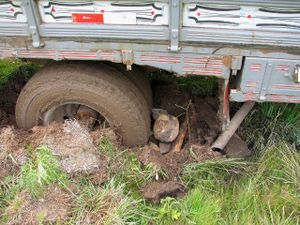
|
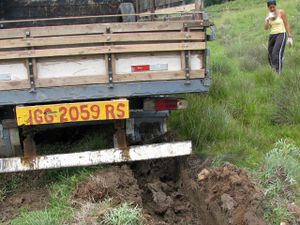
|
We'd had about enough by this point, so we thought we'd just stack the wood tomorrow and go to the tent for dinner - but when we got to the island, the tent was all sagged over with snapped poles and ripped cords and the marquis blown away!!! We had our dinner first anyway since we were starving by this point, and after that I was able to pull the broken poles out and fix them by using insulating tape to hold the split segments together, and fix the snapped segment ends by pulling the snapped-off parts out of the metal sleeves with pliers and fix up the segment end they broke off from with a hacksaw and file. We then had an early night because all the wood was wet and I couldn't start a fire :-(
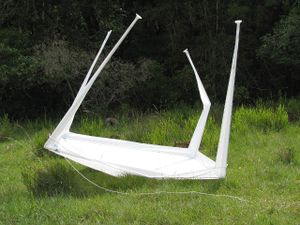
|
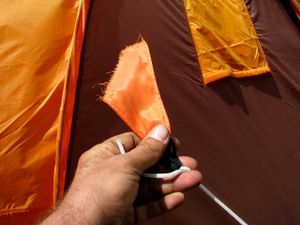
|
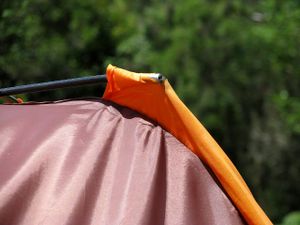
|
Sunday morning was really nice weather, but we were finding it a bit hard to remain in good spirits and felt a bit overwhelmed and we both had a bit of a futility attack. But we did some meditation and then tidied up the messy pile of wood into orderly stacks and then carried three pieces over so we had at least the tiniest but of progress made on our house!
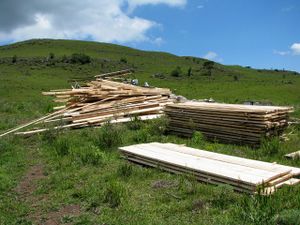
|
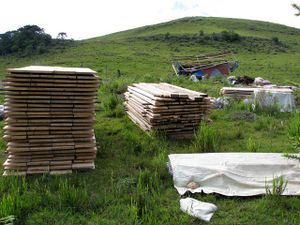
|
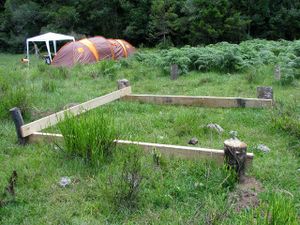
|
We were too tired to do much else that day so we left back for Canela in the afternoon. Then just up the road a little we saw an awesome lizard about a meter long ambling along lazily in the sun. It looked like the same kind we saw in Puerto Iguazú. We then went to our favourite cafe and met up with Beth's sister Rosana (pronounced "Hosarna") and her partner and his son as they're visiting Canela for a few days, so the week ended on a nice note :-)
Week nine
I'm at the pensão connected via my new Huawei B260a 2G/3G router today. The Vivo stores here in Canela and Gramado took over a month trying to get a router for us, but still nothing! so we ended up asking Beth's sister to get one from a Vivo store in Brasília and bring it down when she visited, and she gave it to us last night when we met up at the cafe.
It looks very positive of our connectivity potential on the land because the router is connected very much better than the little USB card was able to here in the pensão which means that we should have a pretty strong connection to the 2G tower from the rock office - especially since we'll be boosting the connection even more with a directional antenna and possibly a powered signal amplifier as well.
We're off to the land early this week (Wednesday morning), we're taking advantage of the holiday period to try and get some solid building time done. Like nearly everything in this adventure, the building of our house is quite overwhelming - the guy at the place we bought the wood off initially recommended we build a 5.4 meter square house since they can give us all the exact wood we need for that project. We assumed this meant that they could give us a plan for this size since they build it all the time - but no! when we asked for a plan, he just scribbled some notes about what wood was for what parts of the house and told us to nail it together "like this" (holding his hands in certain configurations for explanation). I couldn't believe it! but talking to Beth about it later it made a bit more sense - there's a lot of illiteracy in Rio Grande do Sul, especially in the trade industries, and most people just do things purely through practical learning without any reading or note-taking at all.
We made some excellent progress on the house which I've put in more detail in the Our house article, but here's a few photos. We're building a very small place which will later serve as a shed and workshop after we've built a better place from adobe or mud-brick. We also wanted to start with something very cheap and small to practice building since we've never built a house or even a shed before - this house has cost about R$1400 (about NZ$800).
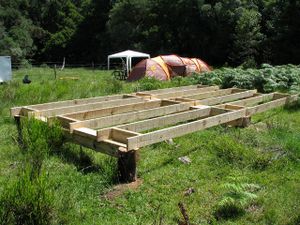
|
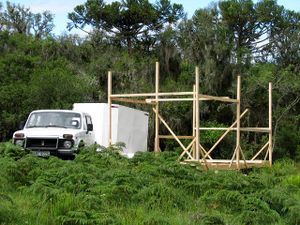
|
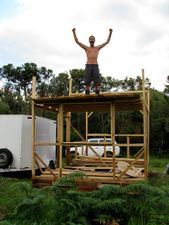
|
Week ten
The first thing I did this week was to test out my new Vivo router at the "rock office", and it looks very promising for connectivity on the land! I tested it just running unassisted (no amplifier or directional antenna) and although it only got a one-bar signal it was far better than the little USB stick! Although it's only a 280kbps 2G connection it was very consistent and usable, I could check email and surf the net no problem - even pages such as this one with many images loaded no problem. With the USB modem it was only just possible to use, emails would take up to a minute to send, most web pages weren't practical to view with images, and I had to turn off the automatic regular email checking in Thunderbird. So the router is a vast improvement already, but after it's amplified, using the directional antenna and running via LAN cable to the house it should be a perfectly acceptable connection for doing my work from the land :-)
I got a few more good shots of more wildlife this week including a frog that moved in to our tent a few weeks ago and is still there :-)
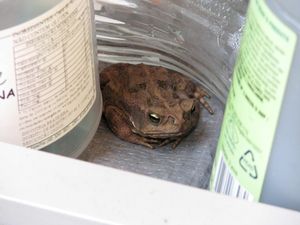
|
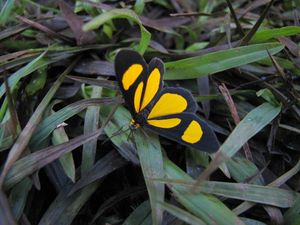
|
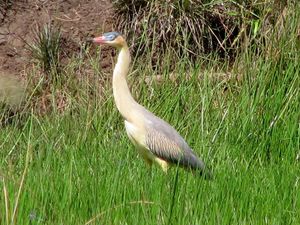
|
We decided to come back to Canela on Christmas day since we need to get some more things to carry on with our house such as some bolts for the foundations, and a circular saw to cut the many braces in practical time.
Of course Christmas wouldn't be complete without a car drama! it started with the engine making a bad noise and straining a lot, so we decided to pull over and take a look. It was very low on oil, but even after topping it up the problem persisted so we thought it would be best to take advantage of the free towing available due to the extortionate road tolls we have to pay along that stretch of highway :-) The guy dropped us and our car off at our favourite 4x4 mechanic, Fernando, and then we decided to go and have a beer or two at the gas station for Christmas!
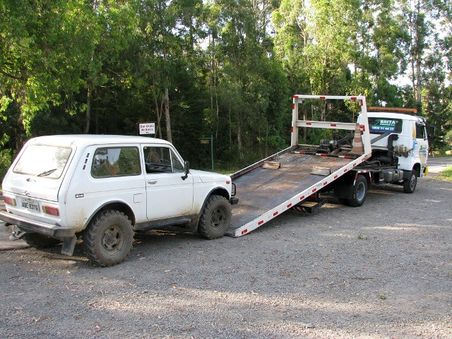
|
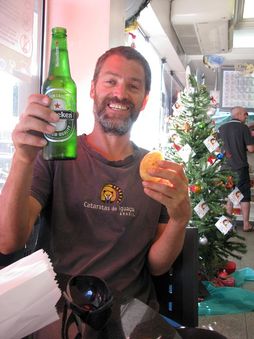
|
Today Beth went out to start buying the things we needed for the house and checked if the mechanic had any news about the car - fortunately the whole problem was just a spark plug! he did tell us that the engine was getting old though and that it may need to be fixed or replaced within the next few years.
Week eleven
This week we left for the land on Sunday and spent a whole week there until the following Sunday since there was no work needing to be done with New Years day being on the Tuesday. It was really hard work, but we made excellent progress getting all the roofing structure in place and all the wall planks on! it's really starting to take form and look more like a house now :-) we had the generator working this time as we'd picked up the necessary fuel and adapters when we were in Canela. The circular saws all used too much power to work with our generator (you really need the generator to be rated at about three times the power of the tool since it draws a large spike initially), so we had to make do with our little jigsaw, but it sure beats the handsaw! See Our house for more details and photos of the house construction.
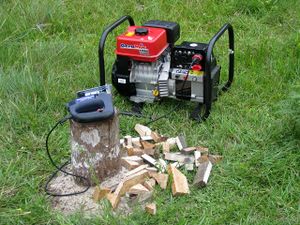
|
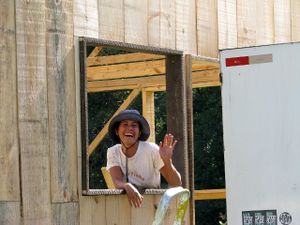
|
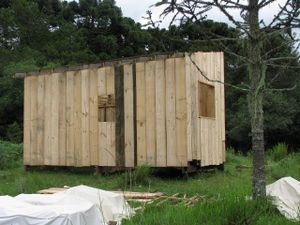
|
There were a couple of storms and a lot of rain for short periods, but most days were intense sun with virtually no cloud so it was extremely hot work. Luckily we have our own little private beach there which we would go to a few times each day to cool down and refresh ourselves :-)
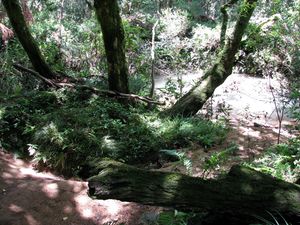
|
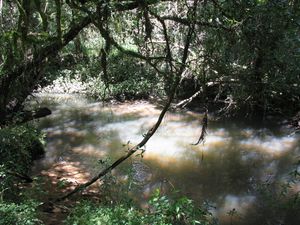
|
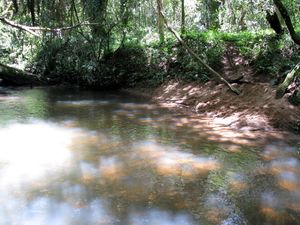
|
I spotted another type of butterfly fluttering around and also got a shot (not focussed very well unfortunately) of one of the vultures that are always flying around high overhead. One morning we were woken up early by snorting sounds and ran out expecting to have to shout at some misbehaving cows, but it was Candido visiting on his horse! he said that he'd had to leave his car five or six kilometres away and take a horse the rest of the way because the road was too muddy for his car. We'd really like to get a horse at some stage so we can become less dependent on the car for accessing the land, so Beth had a bit of a ride around the garden to get a feel for it.
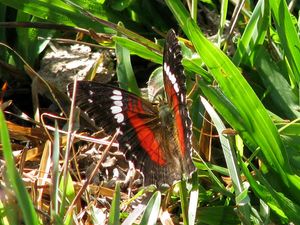
|
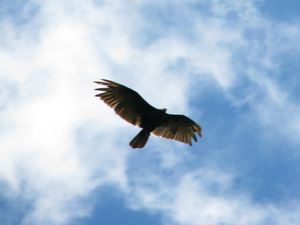
|
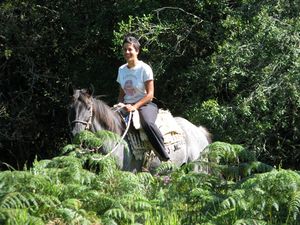
|
Week twelve
This week there wasn't much work to do as everyone was slowly winding back up after the Christmas break so we went back to the land on Wednesday to make an early start getting the roof on. The roofing material we're using contains asbestos so we both wore masks while working around the house until after we'd finished moving it around and drilling it. It was a bit difficult accessing the top parts of the house now since we couldn't climb the frame from the inside with the roof covering it, so Beth whipped up a ladder from some scrap bits of wood in another blatant violation of safety regulations ;-)
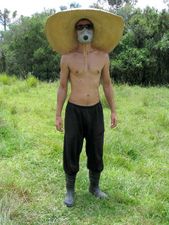
|
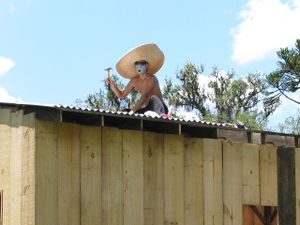
|
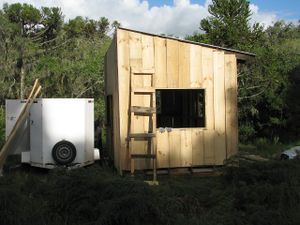
|
It took most of the day to get the roof on, but once done it was really starting to feel like a proper house! the next day we had our first meal in the house which felt like some sort of special oriental tea ceremony since we had to sit on the floor :-)
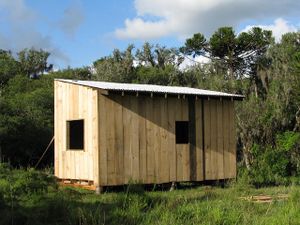
|
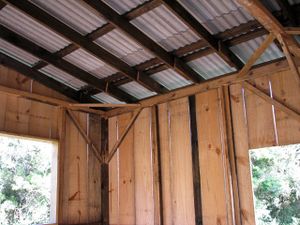
|
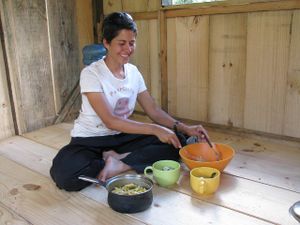
|
On Friday I saw a snake for the first time since our arrival three months ago! I was coming back from our beach when suddenly a dark green snake about a metre or so long and an inch thick sprung up in the middle of the path and darted off into the bush. I think it was most likely a Philodryas patagoniensis which are found around here (as well as in Uruguay, Paraguay, Bolivia and Argentina) and are fairly harmless. I didn't have time to take a photo as it was moving too quickly, but I found one on the net which looks almost identical. The other two photos below are of a huge nice looking caterpillar which had climbed onto our table, and one of the hawks we see flying around here a lot but haven't until now got a photo of.
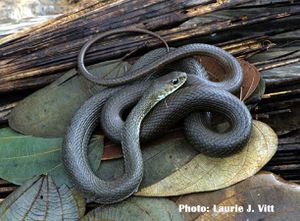
|
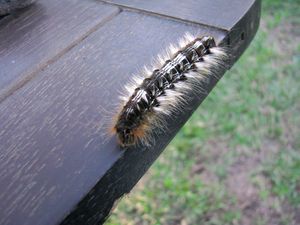
|
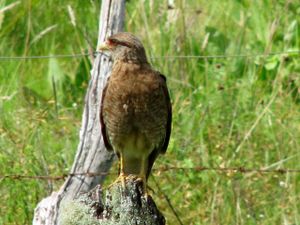
|
In the weekend we decided to have a break from working on the house and do something else, so we thought it'd be a good idea to test out our Petrycoski wood burning oven :-) Claudio Petrycoski set up a company here in southern Brazil many years ago making the best ovens in Brazil which later became the famous "Atlas" brand of ovens. Being of Russian decent, the original Petrycoski wood-burning ovens are extremely sturdy like our Lada Niva! Our Petrycoski weighs over 100Kg, but back in Russia these are considered to be little more than simple portable camp burners that the tough Russian mothers carry with them when the family goes hiking in Siberia - the picture below shows a typical Russian mama collecting fire wood. We had to shift the Petrycoski from the place where everything was unloaded off the truck, and take it in the car across the bridge and through the woods to where our house is being built - and all without the help of a Russian mama!
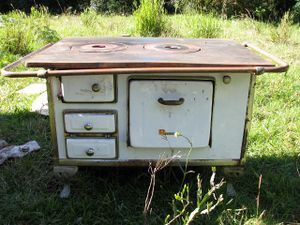
|
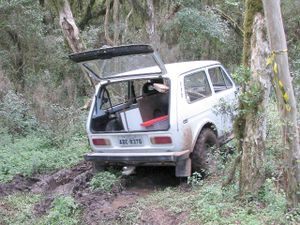
|
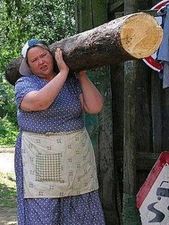
|
We finally got the thing shifted to a position next to our house for testing with only minor injuries, but it was well worth the effort! I was able to get it going pretty quickly and before long we were boiling the kettle and cooking lunch on it :-) Beth loves it too, it's an excellent design that has a spacious cooking surface, and plenty of room surrounding the cooking areas that serve to keep other pots and pans warm after they're cooked. Also once it's going it requires very little maintenance, small logs can be just thrown in without worrying about positioning as it works more like a furnace than an open fire.
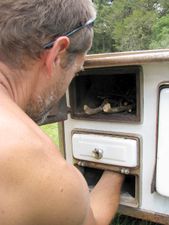
|
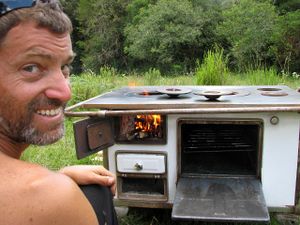
|
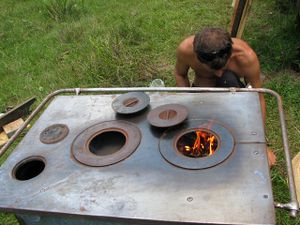
|
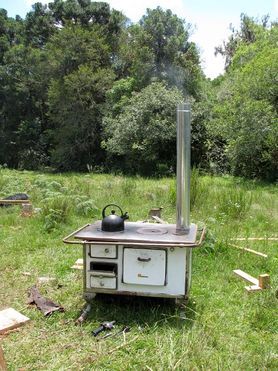
|
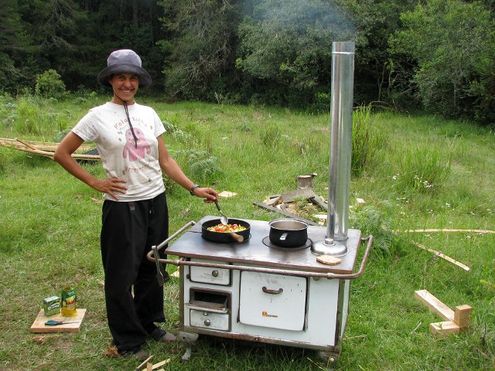
|
Week thirteen
The main event this weekend was that we went for a long bike ride to test out the feasibility of being car-independent living at the land - and it turns out it's very doable! I've included a map to the right which shows some key points in our region starting with the point marked "A" which is our land.
The second point marked "B" is about 5km away and took 40 minutes to ride to since its pretty rough road along that segment, it's the point where we can decide to turn north or south. North takes us up to point "C" about 10km away which, although still dirt road, is actually highway RS-476 where a bus passes by each day that goes to Canela.
Point "D" is also about 10km from our land and that's where we biked to, it's about halfway to the dam (point "E") where our nearest shop and pub is! it's also where we get onto highway RS-235 which is a proper sealed road about 15km from Canela. So it was a good successful bike trip taking about three hours there and back and proving that we could easily have gone all the way to Canela - which we're going to do next week!
We only did a small amount of work on our house this weekend as we've decided to work more slowly on it now that we've got the most important bits done (the frame, walls and roof). Beth finished painting the outside with oil and kerosene to help prevent rot and termites and started putting the floor insulation in. We've been collecting polystyrene rubbish for a month or so now as it makes excellent insulation - it's not very environmentally friendly stuff, but when it's collected from thrown out rubbish it helps the environment because it puts it to good use instead of going to a land-fill somewhere.
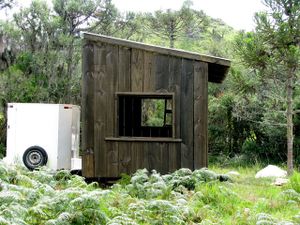
|
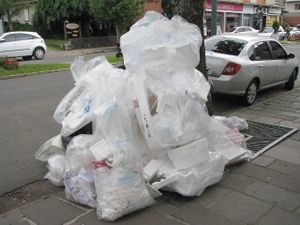
|
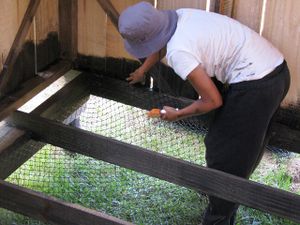
|
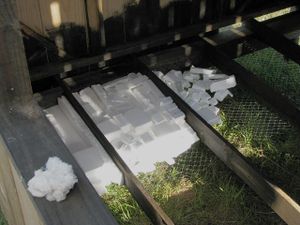
|
This weekend I also started getting the cable set up for our rural net connection. The first step involves stretching a cable 160 metres from our house to the "rock office" where we can receive a workable 2G signal.
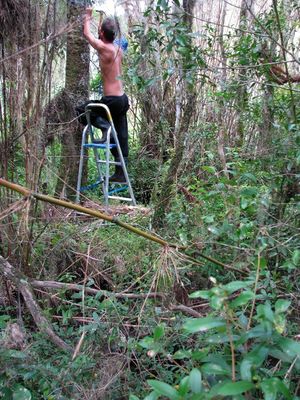
|
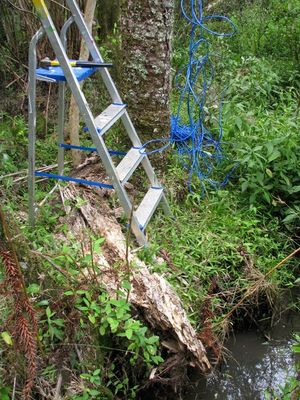
|
A got a few nice nature shots this weekend, a couple from Saturday morning when there was a lot of mist and the cobwebs all became visible from being covered with tiny drops of dew. And I got a couple of good high-resolution shots of a brown butterfly and a grasshopper (as usual, click images for better resolution versions).
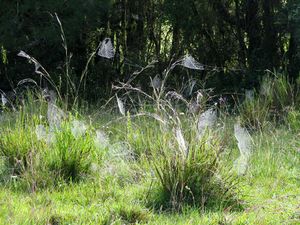
|
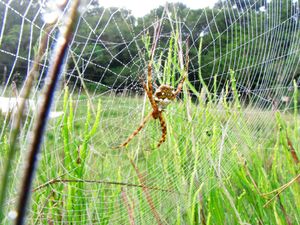
|
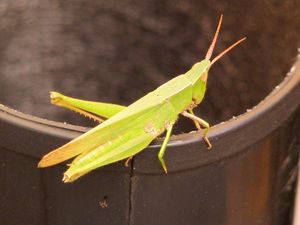
|
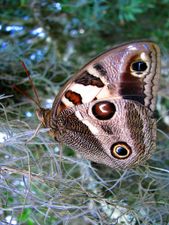
|
Oba! no need for crappy supermarket bread any more - here's the first loaf of home made bread from our trusty old 'coski!
Week fourteen
This weekend we were really starting to feel quite tired and grumpy so got less done than we were hoping. We got most of the insulation into the floor and the floor boards down. We'd started last week by trying to fit nice large pieces of poly in over plastic netting, but soon found that this was far too time-consuming and left quite a few gaps so we changed to just putting a bottom layer of larger pieces filled up on top with small broken bits. About a third of the floor was done like this and then we found that it was actually simpler and more effective to just staple cardboard into the compartments and fill with only small pieces - no need for any large pieces or even for netting. After the poly was all in place we hammered down the floor boards and shifted the 'coski inside ready for our first cooked meal in the house!
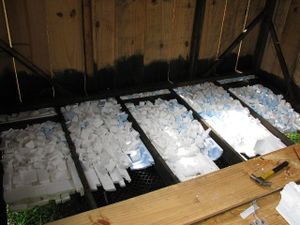
|
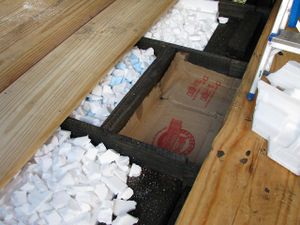
|
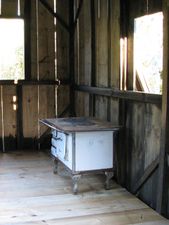
|
You're probably getting a bit sick of caterpillars and butterflies by now, but sorry that's all the nature pics I have - I'll try and find something more interesting like an armadillo or another snake next week :-) although these white butterflies are actually a little more interesting than can be seen from this photo because they're about twice the size of a monarch - they're so big that their wings flap very slowly.
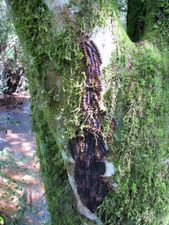
|
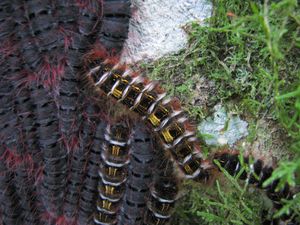
|
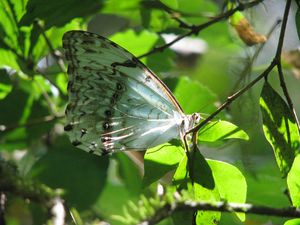
|
Week fifteen
This week started back in Canela with the starter motor dying for the third time! What happens is that the brush connections melt and need to be resoldered, but since it's happened for the third time now, we're going to take it to a different mechanic and see if he can do a better job, or if not we may have to get a new starter motor. We've had a lot of expenses this month, so we've decided to leave the car repairs for a while and have a go at being car-independent by using the bus, cycling and walking!
I then did some tests on the transformers I bought for powering our net connection using just a LAN cable, only to find that the method is too inefficient over the distance required, so we'll require a separate power cable after all :-( The final picture below shows the transformers connected by a 120 metre length of LAN cable powering a 15W light bulb using the 220 volt car inverter. It shows that the voltage has dropped from 220 volts to only 66 volts. Although the mechanism could quite easily be configured to double this to a usable 130 volts or so, the wasted power radiated from the cable as heat would be around 20 watts which isn't practical since we have to generate all our own power. See our rural net connection for more details about this.
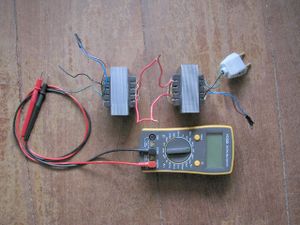
|
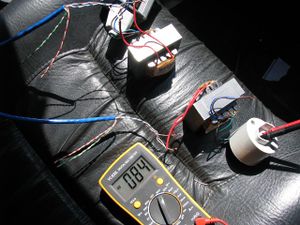
|
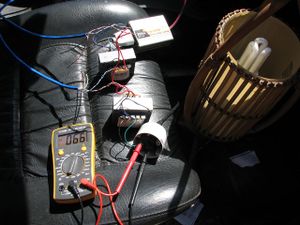
|
I took the transformers back today and luckily the hardware store was nice enough to refund me the R$60 for them, I then bought 100 metre roll of 2x1mm power cable for about R$90 which is enough to get the first half of the cabling in place. This is quite thin cable, but should be fine since at 220 volts it only needs to carry about 100mA. The losses are proportional to the square of the current, so now that we're using twenty times less current (since we're supplying the same power but using twenty times more voltage to do it), the losses will be at least 400 times less. Putting a high voltage through the LAN cable pairs is not an option even at such a low current because the higher voltage will interfere with the network signal since the wires are unshielded.
Today our Christmas present from Mum and Dad finally made it through the Brazilian postal system - only two months late - but better late than never! It was two blocks of our favourite chocolate - Whittaker's hazelnut chocolate! and two NZ style standard 50c potato peelers - I've really missed those! so tonight we're having a potato pie :-) it's my job to peel the potatoes for it - here's a pic of me doing the extremely difficult double-peel manoeuvre!

|

|
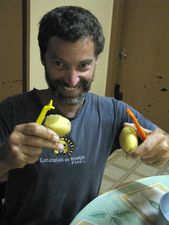
|
Mmmmmmmmm - potato pie with spinach, tomato, mushroom and smoked cheese! accompanied by a nice Chilean merlot :-)
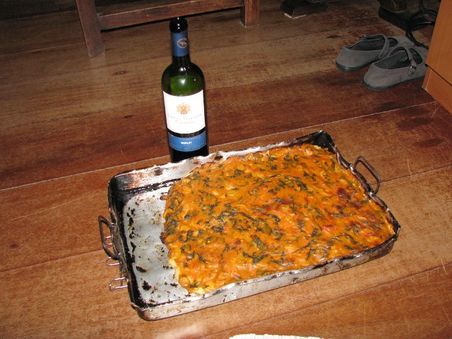
|
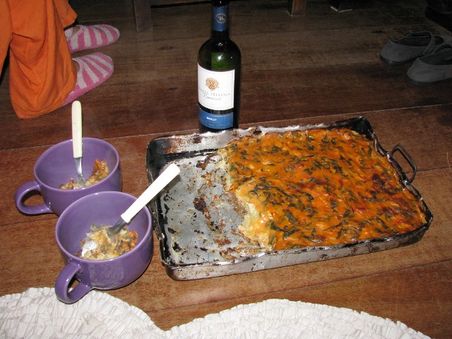
|
On Wednesday we headed for the land without the car for the first time! we caught the Bom Jesus (pronounced "Bong Jayzoo") bus that goes past the church at point "C" in our map shown above in Week thirteen. Luckily Candido was there working on a nearby farm and offered to give us a ride from there to the land, so that saved us a couple of hours of walking with heavy bags :-)
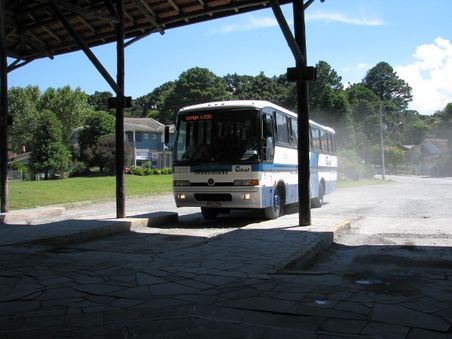
|
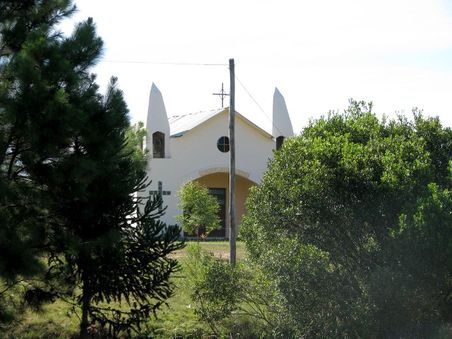
|
The main thing we wanted to get done this time at the land was to get some temporary windows and a door in place so that we could move our things out of the tent and into the house. The tent is really on its last legs and we're always worried about storms and having to shout at visiting cows in the middle of the night in case they trip over the tent cords! The first thing we did was to nail some floor boards onto the loft which is where we'll be sleeping - but because we haven't got the thin planks ordered yet to block up the gaps between the wall boards, we decided to move the inner part of the tent into the house on the loft so we can move in now even though its not waterproof yet. After moving out of the tent we had a nice candle lit dinner and finished off the Chilean merlot :-)
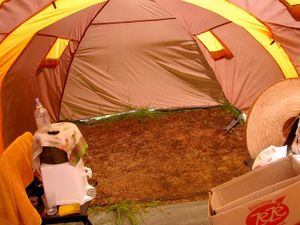
|
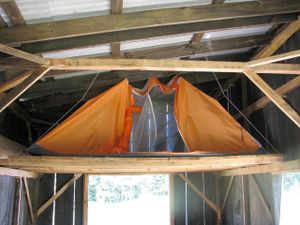
|
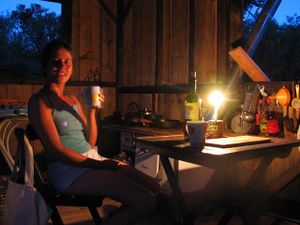
|
The next day I made a basic door out of three of the left over floor boards, and Beth made some sliding windows with small pieces of scrap wood and clear plastic - we can't make the proper doors and windows yet because we need to do some more planning and then do another large order of material to be delivered in the truck all at once. The door has a padlock on it so we can lock it from the outside which keeps curious cows out, but of course won't do much to keep the odd cheeky intruder out :-) Now at last we don't have to worry about the cows wandering around - and they were quick to make the most of it too!
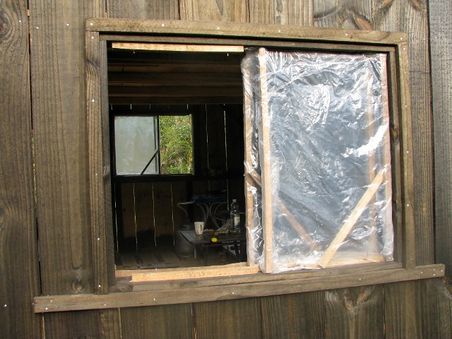
|
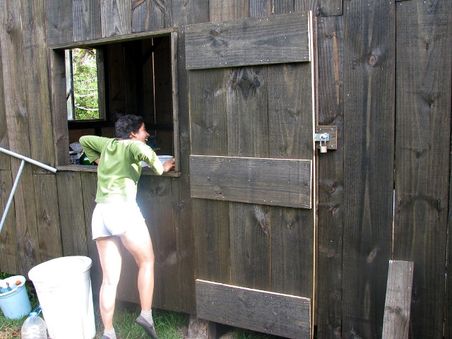
|
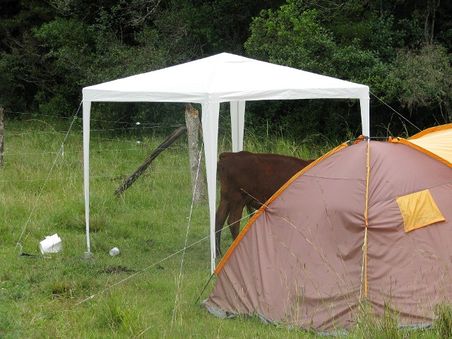
|
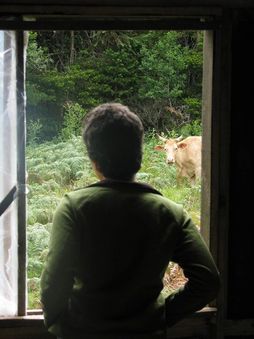
|
So with such good progress on the house situation done I decided to make some more progress on the net connection during the weekend. First I made a small wooden box to put at the halfway point in which to house a hub to relay the LAN signal (the Ethernet standard has a 100 metre maximum length for any single network segment). I used fencing wire to hold the main weight of the cables and hung them down loosely under it, and then used a wire tightener to lift it up to a reasonable height. Note that the network and power cables are connected at alternate positions along the fencing wire - this is done because AC power and signal cables should not be run in parallel. One of our big fat Argentinian lizards was curious about what was going on in its swamp and came to watch while I was attaching the cables to the fencing wire :-) See our rural net connection for more photos and information about this project.
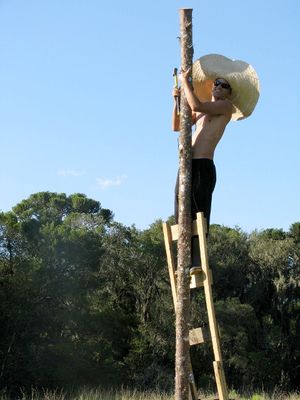
|
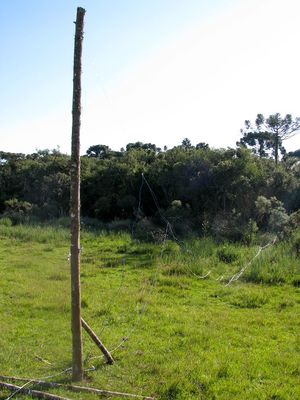
|
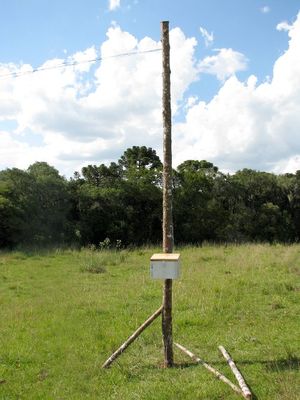
|
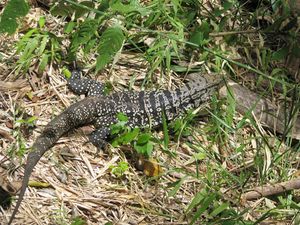
|
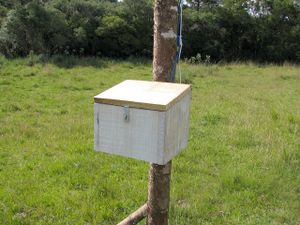
|
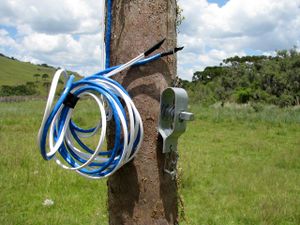
|
While I was working on the pole and cabling, Beth was experimenting with different combinations of readily available resources from which to make putty to seal up the gaps between the wall boards such as sand, clay, burned oil and saw dust. We'd prefer to use the sand and clay from our own land rather than buy more wood if it works well enough, as we have an excellent source of good sand at our little beach and really good sticky clay only a foot under the ground on the side of our hill.
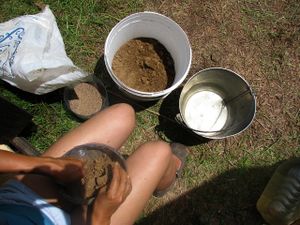
|
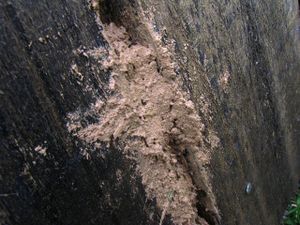
|
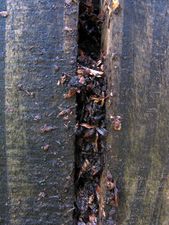
|
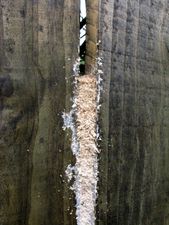
|
Then finally on Sunday, after a couple of photos of insects and bugs, it was time to set off back to Canela for the week - on bike! the weather was fine and we decided to see what it would be like to cycle the whole way! Our route would be points A, B, D and E on the map shown above which would take us to the highway, then another 15km from there to Canela.
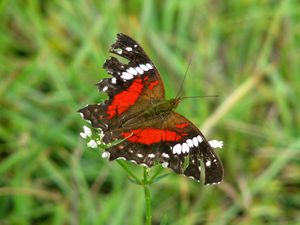
|
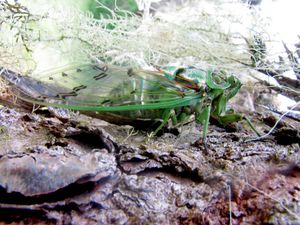
|
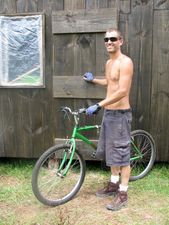
|
Things started off pretty well and it was a really nice ride for the first hour - who'd have thought that on a hot day like that we'd be almost dying from hypothermia only a couple of hours later?! well not quite, but we were shivering in icy winds surrounded by thunder and lightning struggling through mud wearing nothing but shorts and t-shirts!!! we stopped at the dam superette hoping for a hot coffee, but there was nothing hot there to be had unfortunately - one of the locals was kind enough to offer us his hose when he saw the state of our bikes though :-)
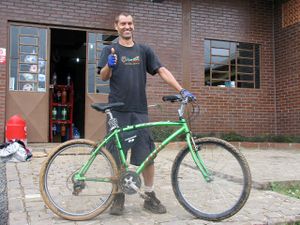
|
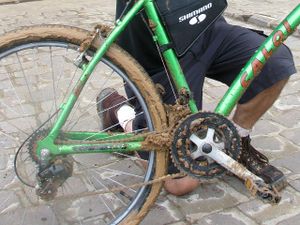
|
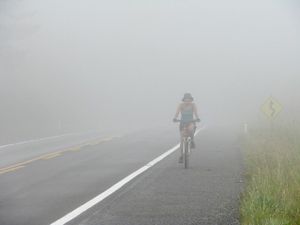
|
It took two hours forty five to get to the dam, and then another hour and a half to make it along the final 15km of highway back to the pensão which was actually pretty good time, we were expecting it to take about five hours, but it only took four hours fifteen. We were soaked and frozen when we finally made it back - but on the bright side, it did prove that it'd be a walk in the park on a good day - or with appropriate clothing ;-)
Next
This is the end of this blog, now that we've got our house constructed to a point where we can live in it. The next blog I've called "living on our land" which covers the projects needed to be able to stay there full time and not needing to keep a room rented in Canela that we need to return to every week to work.
